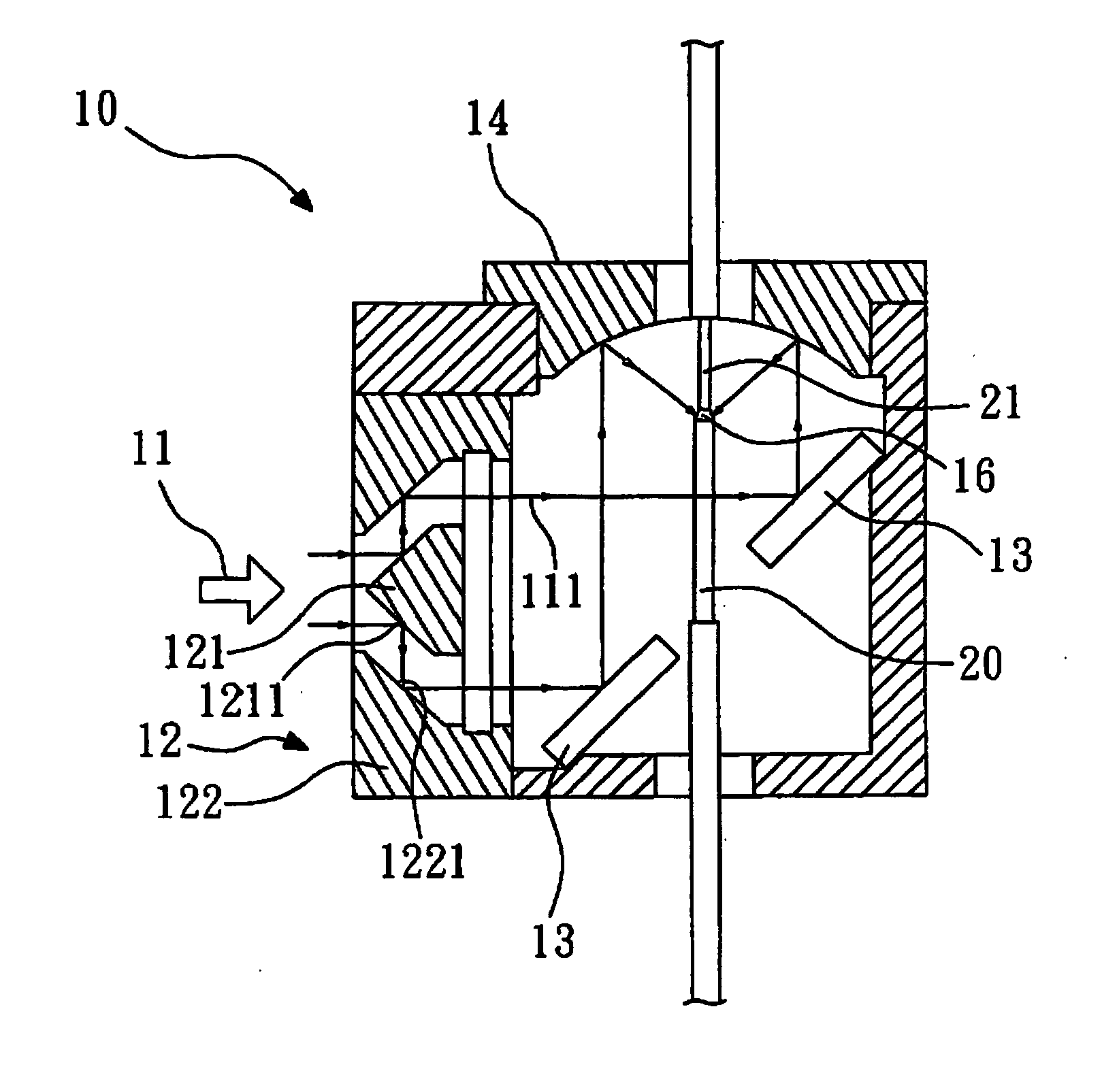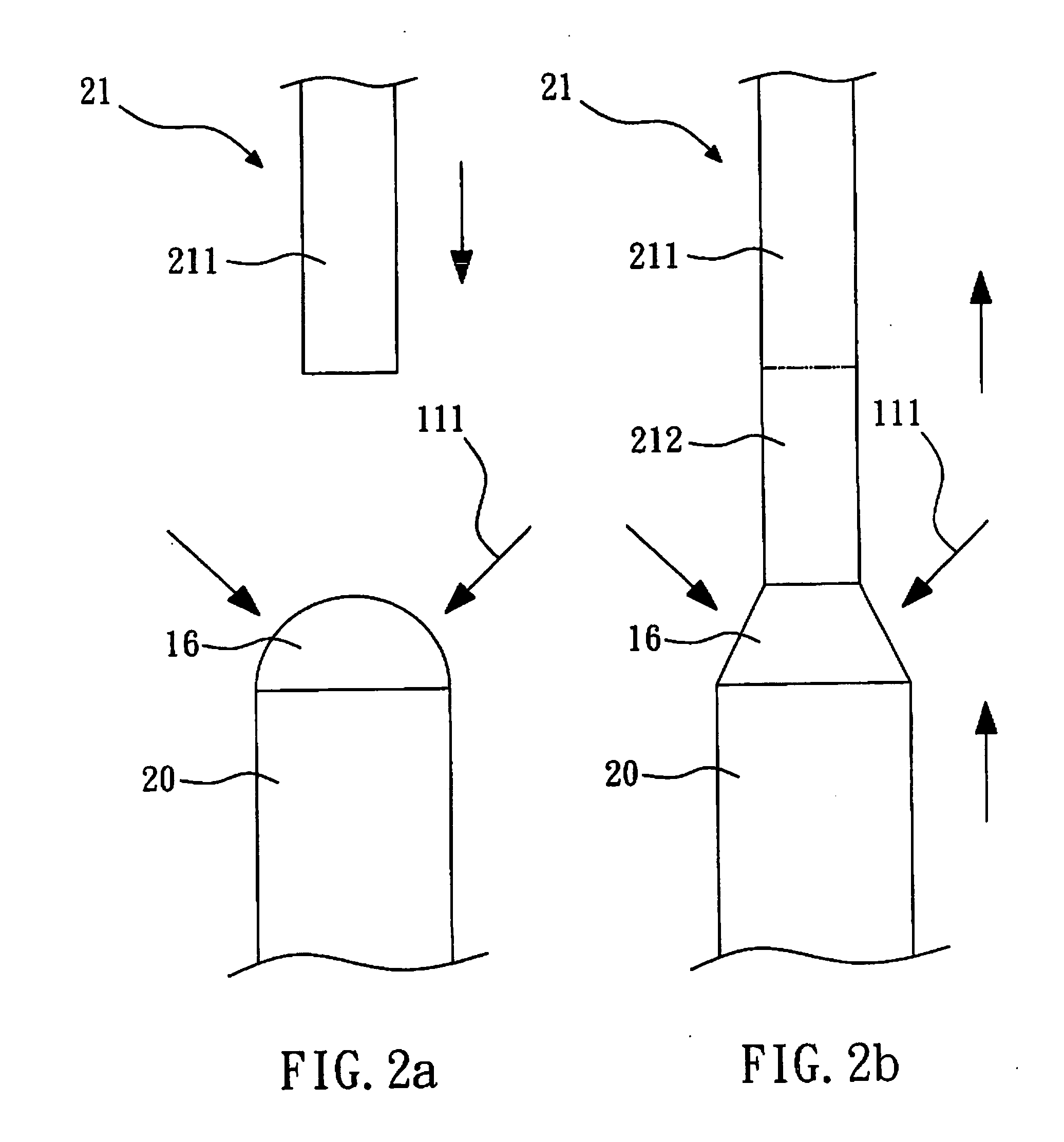Fiber used in wideband amplified spontaneous emission light source and the method of making the same
a fiber and amplified spontaneous emission technology, applied in the field of fibers and the method of making the same, can solve the problems of increasing the cost and complexity of the system, increasing the cost of the system, and increasing the cost of the system, and achieve the effect of high damage threshold power
- Summary
- Abstract
- Description
- Claims
- Application Information
AI Technical Summary
Benefits of technology
Problems solved by technology
Method used
Image
Examples
Embodiment Construction
[0036] The method of making a fiber according to the present invention mainly comprises two steps: growing step and cladding step.
[0037]FIG. 1 shows a schematic diagram of a chamber of a fabricating apparatus for fabricating a crystal fiber according to the growing step of the present invention. The apparatus 10 is a laser heated pedestal growth (LHPG) apparatus, which is used for making a source material (for example, a source crystal rod 20) into a crystal fiber 21. In this embodiment, the material of the source crystal rod 20 is YAG crystal doped with Cr4+ ions. Alternatively, the material of the source material may be glass having garnet structure or ceramic, doped with chromium. A molten zone 16 is formed on the interface between the source crystal rod 20 and the crystal fiber 21. The apparatus 10 comprises a laser beam generator (not shown), a beam splitter 12, a bending mirror 13 and a paraboloidal mirror 14.
[0038] The laser beam generator is used for generating a CO2 laser...
PUM
 Login to View More
Login to View More Abstract
Description
Claims
Application Information
 Login to View More
Login to View More - R&D
- Intellectual Property
- Life Sciences
- Materials
- Tech Scout
- Unparalleled Data Quality
- Higher Quality Content
- 60% Fewer Hallucinations
Browse by: Latest US Patents, China's latest patents, Technical Efficacy Thesaurus, Application Domain, Technology Topic, Popular Technical Reports.
© 2025 PatSnap. All rights reserved.Legal|Privacy policy|Modern Slavery Act Transparency Statement|Sitemap|About US| Contact US: help@patsnap.com



